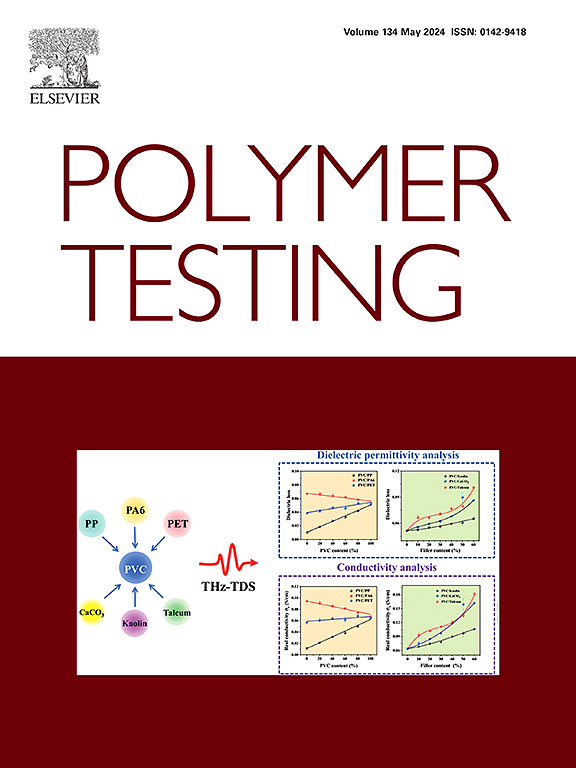Melting behaviour and crystallisation kinetics of carbon-fibre-reinforced low-melting poly(aryl ether ketone)
IF 5
2区 材料科学
Q1 MATERIALS SCIENCE, CHARACTERIZATION & TESTING
引用次数: 0
Abstract
The dependence of material properties and residual stress formation on the crystallinity of thermoplastic composites necessitates detailed analyses regarding the melting behaviour and the crystallisation kinetics of employed semi-crystalline matrices as well as accurate crystallisation models. This paper investigates a novel low-melting poly(aryl ether ketone) (LM-PAEK) reinforced with carbon fibres, in the form of TC1225 unidirectional tape, based on isothermal and non-isothermal differential scanning calorimetry (DSC). It is shown that the LM-PAEK matrix features a double melting behaviour and exhibits an absolute crystallinity of roughly . Kinetics parameters are derived from the DSC analyses and the applicability of selected crystallisation models for predicting the relative crystallinity is evaluated based on a comparison with the DSC data. Under isothermal conditions, the modified Hillier model and the parallel Velisaris–Seferis model yield good agreement. In contrast, a dual Nakamura model and a dual Kamal–Chu model yield merely moderate agreement under non-isothermal conditions.
求助全文
约1分钟内获得全文
求助全文
来源期刊

Polymer Testing
工程技术-材料科学:表征与测试
CiteScore
10.70
自引率
5.90%
发文量
328
审稿时长
44 days
期刊介绍:
Polymer Testing focuses on the testing, analysis and characterization of polymer materials, including both synthetic and natural or biobased polymers. Novel testing methods and the testing of novel polymeric materials in bulk, solution and dispersion is covered. In addition, we welcome the submission of the testing of polymeric materials for a wide range of applications and industrial products as well as nanoscale characterization.
The scope includes but is not limited to the following main topics:
Novel testing methods and Chemical analysis
• mechanical, thermal, electrical, chemical, imaging, spectroscopy, scattering and rheology
Physical properties and behaviour of novel polymer systems
• nanoscale properties, morphology, transport properties
Degradation and recycling of polymeric materials when combined with novel testing or characterization methods
• degradation, biodegradation, ageing and fire retardancy
Modelling and Simulation work will be only considered when it is linked to new or previously published experimental results.
 求助内容:
求助内容: 应助结果提醒方式:
应助结果提醒方式:


